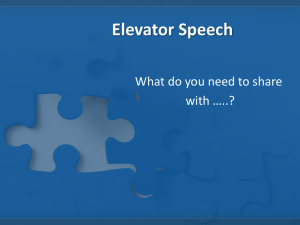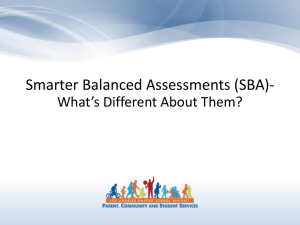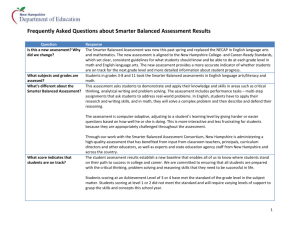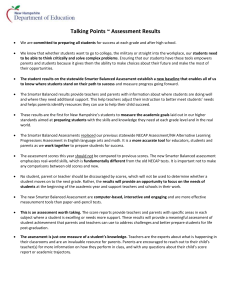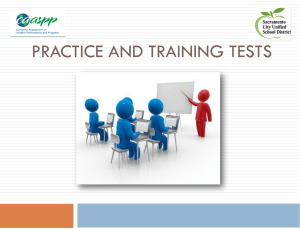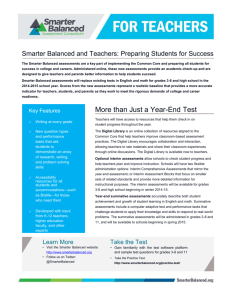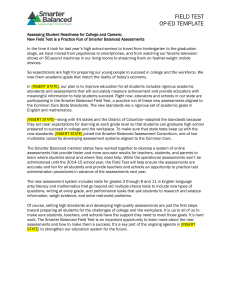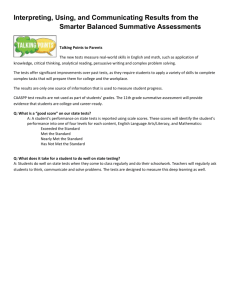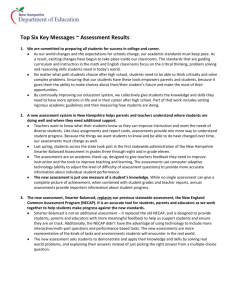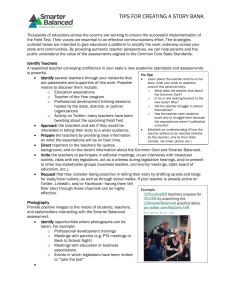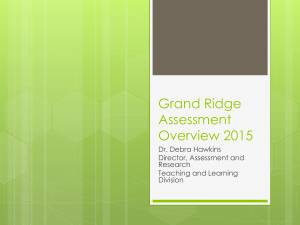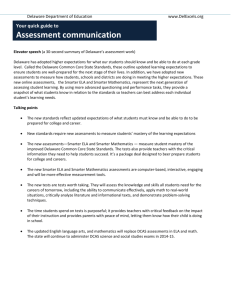Smarter-Balanced-Summative
advertisement
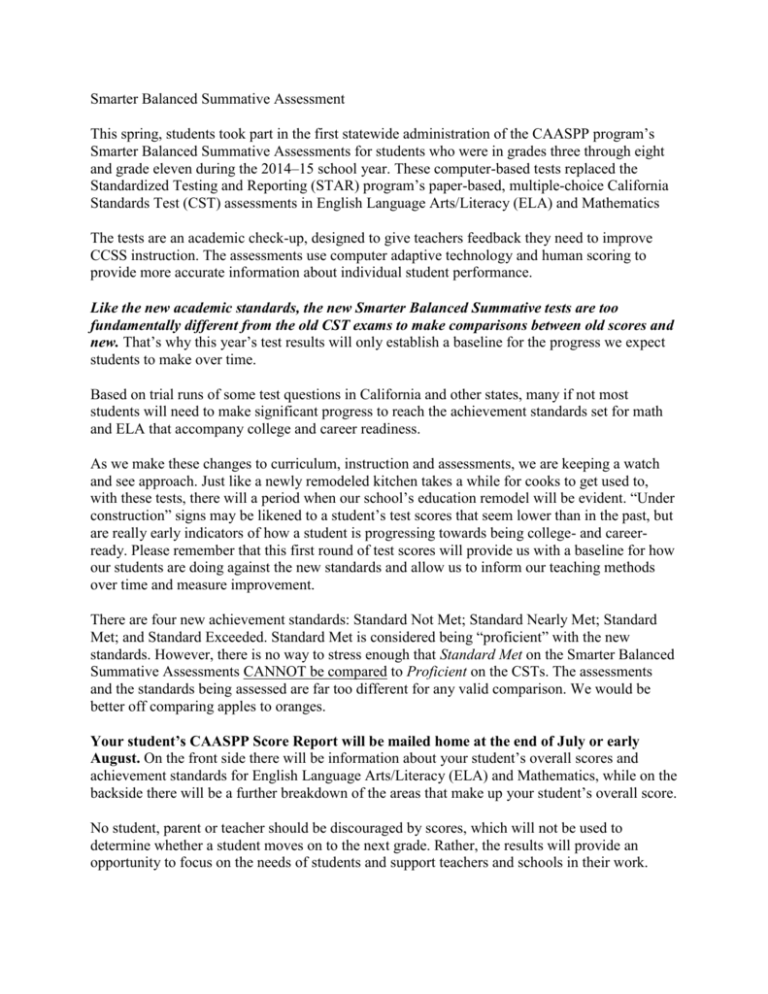
Smarter Balanced Summative Assessment This spring, students took part in the first statewide administration of the CAASPP program’s Smarter Balanced Summative Assessments for students who were in grades three through eight and grade eleven during the 2014–15 school year. These computer-based tests replaced the Standardized Testing and Reporting (STAR) program’s paper-based, multiple-choice California Standards Test (CST) assessments in English Language Arts/Literacy (ELA) and Mathematics The tests are an academic check-up, designed to give teachers feedback they need to improve CCSS instruction. The assessments use computer adaptive technology and human scoring to provide more accurate information about individual student performance. Like the new academic standards, the new Smarter Balanced Summative tests are too fundamentally different from the old CST exams to make comparisons between old scores and new. That’s why this year’s test results will only establish a baseline for the progress we expect students to make over time. Based on trial runs of some test questions in California and other states, many if not most students will need to make significant progress to reach the achievement standards set for math and ELA that accompany college and career readiness. As we make these changes to curriculum, instruction and assessments, we are keeping a watch and see approach. Just like a newly remodeled kitchen takes a while for cooks to get used to, with these tests, there will a period when our school’s education remodel will be evident. “Under construction” signs may be likened to a student’s test scores that seem lower than in the past, but are really early indicators of how a student is progressing towards being college- and careerready. Please remember that this first round of test scores will provide us with a baseline for how our students are doing against the new standards and allow us to inform our teaching methods over time and measure improvement. There are four new achievement standards: Standard Not Met; Standard Nearly Met; Standard Met; and Standard Exceeded. Standard Met is considered being “proficient” with the new standards. However, there is no way to stress enough that Standard Met on the Smarter Balanced Summative Assessments CANNOT be compared to Proficient on the CSTs. The assessments and the standards being assessed are far too different for any valid comparison. We would be better off comparing apples to oranges. Your student’s CAASPP Score Report will be mailed home at the end of July or early August. On the front side there will be information about your student’s overall scores and achievement standards for English Language Arts/Literacy (ELA) and Mathematics, while on the backside there will be a further breakdown of the areas that make up your student’s overall score. No student, parent or teacher should be discouraged by scores, which will not be used to determine whether a student moves on to the next grade. Rather, the results will provide an opportunity to focus on the needs of students and support teachers and schools in their work. California’s new assessment system represents the next step in our comprehensive plan to promote high-quality teaching and learning and improve student outcomes. This plan recognizes that assessments can play a role in promoting high-quality instruction. Teachers in California support these changes because, unlike in other states, the primary purpose of testing here is to support learning, not to impose high-stakes consequences. This approach fits well with California’s new LCFF funding our schools, which recognizes that decisions about education dollars are best made by parents, teachers and communities themselves. The system-wide changes we have begun are focused on helping students succeed in the long run, achieving their dreams of college and a career. They will take considerable time and effort to carry out. That’s why the course we’ve set in California is to carefully phase in change as state and local capacity grows. In a state as diverse and complex as California, adjustments will always be needed to make lasting progress. Patience and persistence will be required to help our schools continue to succeed during this time of transition.
